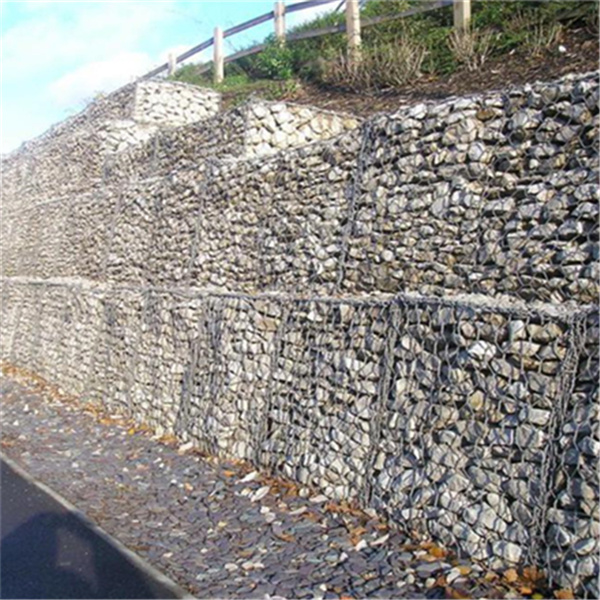Dec . 28, 2024 02:01 Back to list
china geotextile gabion
Geotextile Gabions A Sustainable Solution for Modern Engineering Applications
The increasing environmental concerns and the demand for sustainable infrastructure have led to innovative engineering solutions in the construction and civil engineering sectors. One such advancement is the geotextile gabion, an effective merging of traditional gabion structures with modern geotextile materials. This synergy not only enhances performance but also contributes to ecological stability, making it a preferred choice in various applications across China and beyond.
Understanding Geotextile Gabions
At its core, a gabion is a wire mesh container filled with rocks or other materials used for erosion control, slope stabilization, and riverbank protection. Traditionally, gabions have been constructed using rigid frames filled with quarried stone. However, the incorporation of geotextiles transforms these structures into more versatile and functional solutions. Geotextiles are permeable fabrics that aid in drainage while providing structural support.
Geotextile gabions maintain the core attributes of traditional gabions—durability and adaptability—while offering enhanced filtration and drainage capabilities. The geotextile fabric allows for the movement of water, reducing hydrostatic pressure behind the structure, thus preventing soil erosion and structural failure. This feature is particularly beneficial in areas susceptible to flooding or heavy rainfall, where groundwater management is essential.
Applications in Civil Engineering
In China, geotextile gabions are increasingly being utilized in various civil engineering projects. These structures play a critical role in riverbank stabilization, helping to prevent soil erosion and maintain the natural flow of waterways. They are also used in road construction and hillside support, where they provide essential reinforcement to prevent landslides. The adaptability of geotextile gabions allows for their use in both temporary and permanent installations, catering to diverse project requirements.
china geotextile gabion

Furthermore, these structures contribute to ecological restoration efforts. By stabilizing slopes and riverbanks, geotextile gabions help maintain natural habitats and promote biodiversity. Vegetation can easily grow within the gaps of the gabions, fostering a healthy ecosystem while enhancing the aesthetic value of the landscape. This aspect is significant in China, where rapid industrial development has often come at the cost of environmental degradation.
Cost-Effectiveness and Sustainability
One of the most appealing advantages of geotextile gabions is their cost-effectiveness. Compared to traditional construction methods, deploying geotextile gabions can significantly reduce labor and material costs. The on-site fill material often consists of locally sourced aggregates, minimizing transportation expenses and associated carbon footprints. Additionally, the durability of these gabions ensures a long lifespan with minimal maintenance, allowing for cost savings over time.
Sustainability is at the heart of the geotextile gabion design. The use of natural materials for infill, combined with the ability of the geotextiles to improve drainage, contributes to environmental conservation efforts. As global awareness of climate change and environmental issues grows, the demand for sustainable construction solutions like geotextile gabions is set to rise.
Future Prospects
Looking ahead, the application of geotextile gabions in China is likely to expand, particularly given the country’s commitment to sustainable infrastructure development. Advances in material technology could lead to even more efficient and eco-friendly geotextile options, enhancing the overall performance of gabion systems. Furthermore, increased collaboration between engineers, environmentalists, and policymakers can promote the adoption of these innovative solutions in urban planning and rural development projects.
In conclusion, geotextile gabions represent a sustainable and effective solution in modern engineering, particularly in the context of China's rapid development. By combining traditional gabion designs with advanced geotextile materials, these structures provide robust support for civil engineering projects while addressing ecological concerns. As we move forward, embracing such solutions will be crucial in creating resilient infrastructure that harmonizes with the environment.
-
hesco-gabion-baskets-for-coastal-erosion-prevention
NewsAug.22,2025
-
longevity-and-durability-of-river-rock-gabion-walls
NewsAug.22,2025
-
how-to-integrate-gabion-3d-walls-in-urban-planning
NewsAug.22,2025
-
reno-mattress-gabion-applications-in-civil-engineering
NewsAug.22,2025
-
how-to-install-wire-mesh-for-gabion-baskets-properly
NewsAug.22,2025
-
best-materials-for-filling-a-chain-link-gabion
NewsAug.22,2025
-
Wire Mesh Thickness Impact on Gabion Wall Load Bearing
NewsAug.12,2025






